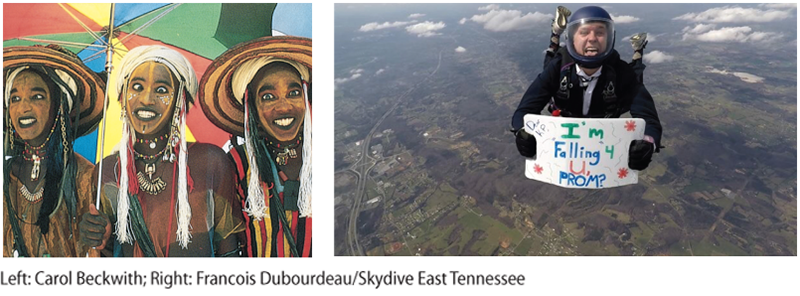Defining Psychological Disorders
A psychological disorder is a syndrome (collection of symptoms) marked by a “clinically significant disturbance in an individual’s cognition, emotion regulation, or behavior” (American Psychiatric Association, 2013). Such thoughts, emotions, or behaviors are dysfunctional or maladaptive—they interfere with normal day-to-day life. Believing your home must be thoroughly cleaned every weekend is not a disorder. But if cleaning rituals interfere with work and leisure, as Marc’s uncontrollable rituals did, they may be signs of a disorder. Occasional sad moods that persist and become disabling may likewise signal a psychological disorder.
Distress often accompanies such dysfunction. Marc, Greta, and Stuart were all distressed by their thoughts, emotions, or behaviors.

Culture and normality Young men of the West African Wodaabe tribe traditionally put on decorative makeup and costumes to attract women. Young American men may plan elaborate invitations for big events, as did this student (right) who appealed (successfully) to his date for prom. Each culture may view the other’s behavior as abnormal.
Over time, definitions of what makes for a “significant disturbance” have varied. From 1952 through December 9, 1973, homosexuality was classified as a psychological disorder. By day’s end on December 10, it was not. The American Psychiatric Association made this change because more and more of its members no longer viewed same-sex attraction as a psychological problem. Such is the power of shifting societal beliefs. (Later research revealed, however, that the stigma and stresses that people who are gay, lesbian, transgender, and gender nonconforming often experience can increase the risk of mental health problems [Hatzenbuehler et al., 2009; Meyer, 2003].) In the twenty-first century, other controversies swirl over new or altered diagnoses in the most recent classification tool for describing disorders.
“ Who in the rainbow can draw the line where the violet tint ends and the orange tint begins? Distinctly we see the difference of the colors, but where exactly does the one first blendingly enter into the other? So with sanity and insanity.”
Herman Melville, Billy Budd, Sailor, 1924